The Art of Subwoofer Placement
What’s the best location for my subwoofer? Like many things in life, subwoofer placement often involves compromise, and is typically driven by competing variables like décor and visual impact considerations, available floor space, foot traffic areas and of course optimal sound quality.
Just One Spot...
Sometimes there is literally ‘one spot’ for the subwoofer. Don’t dismay if this is the case – it’s very common for home theaters and audio systems to be located in a living/family room. Everything in the room is competing for available floor space, and décor and visual impact are often significant considerations too.
If you are limited to a single subwoofer location, to the extent possible try to find the best listening location in the room. You’ll notice as you move through the room that the bass response will vary significantly. This is due to the complex pattern of direct and reflected standing waves in the room.
Sometimes simply moving a few feet in any given direction can improve the bass from boomy and one-note to balanced and accurate. Once you find the ‘subwoofer sweet spot’ in the room – reserve that seat for yourself!
A Few Available Subwoofer Locations
Dedicated listening rooms and home theaters will generally have more flexibility with subwoofer placement, with 3-4 potential locations usually available.
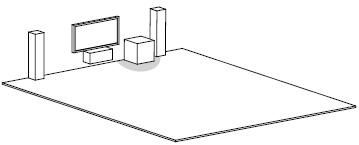
Start Up Front
Subwoofer placement in the front of the room is the most common and usually results in the best blending with the main speakers and center channel and minimizes localization effects. Bass is omni-directional. When properly placed a subwoofer should not give away its location and you should feel like the bass is coming from all around you. If you are noticing localization, try placing the subwoofer on both sides of the front stage and listen for the best results.
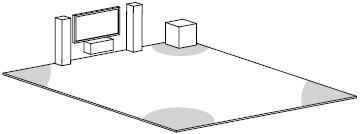
Try A Corner
SVS recommends starting with corner placement. Corner placement excites all possible room modes, resulting in a denser standing wave pattern in the room. This reduces (but doesn’t eliminate) the potential to encounter nulls, which are acoustic cancellation points or ‘dead spots’ in the room.
If corner placement on the front stage sounds awesome - consider yourself lucky and kick back to enjoy some music and movies!
The 'Subwoofer Crawl'
If corner placement doesn’t result in optimal bass response, then SVS recommends the ‘subwoofer crawl’ technique. It may sound odd, but this really works and can help determine the best possible placement location if you have multiple options and want the best sound possible. This involves the following steps:
- Place the subwoofer at or near the main listening position. Get help moving the subwoofer if it’s a big/heavy model.
- Loop a familiar soundtrack with a repeating bass line.
- Evaluate the bass quality at each available subwoofer location in the room. Keep your head at/near knee level while listening (hence the term ‘subwoofer crawl’).
- Pick the location in the room which provides the most accurate and balanced sounding bass – and place the subwoofer there.
Check out the entire SVS Subwoofer line-up to choose the subwoofer that are best for you.
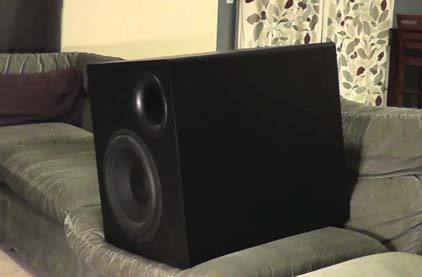
(Photo used courtesy of Audioholics.com)
Other Tips to Improve Bass Response
Be Flexible with Listening Location
Even if you’ve already found the best subwoofer location in the room, it still pays to be flexible with the listening position. Small changes in the seating location can often yield big benefits by moving out of a peak or null and into a more neutral sounding location.
EQ Can Help

While nulls or ‘dead spots’ should be avoided at all costs, standing wave modal peaks, or “boomy spots”, can often be tamed with equalization. Some AV receiver auto-set-up routines can equalize the subwoofer channel. If your receiver does not EQ the sub channel, there are plenty of external subwoofer equalizer systems on the market which are affordable and effective.
Trap That Bass!
Due to their size and visual impact, bass traps are often a non-starter in living/family rooms. But bass traps are often a possibility in dedicated listening rooms and home theaters. Bass traps significantly reduce the amount of reflected bass energy in the room, reducing the severity of modal peaks and nulls and also lowering decay/ring times – greatly improving sound quality.
Go with Dual Subwoofers
Despite all your efforts to optimize subwoofer placement, a single subwoofer will not have an optimal frequency response at all listening positions in the room. This can be a real problem in larger home theaters with multiple rows of seating.
Upgrading to dual subwoofers greatly increases the modal density in the room. The result is a smoother frequency response at more listening positions in the room, with less potential for obvious peaks/nulls in the frequency response. This also makes the use of any EQ more effective.
Learn more about the benefits of dual subwoofers in our article, Why Go with Dual Subwoofers.
SVS makes a variety of powered subwoofers to fit every room, audio system and budget. If you’re looking for a recommendation to pair with your loudspeakers, try our Subwoofer Matching Tool. Just enter your speakers and our matching tool will recommend the best options and settings, instantly!
Have questions? Our Sound Experts are available 7 days-a-week to help you choose the best subwoofers based on your system and listening preferences. You can reach them at custservice@svsound.com, 877.626.5623 or chat.
Browse SVS Subwoofers by Series

1000 Pro Series
Reference performance hits an all-time low with the 1000 Pro Series. Includes all-new 12-inch high-excursion drivers, 325 watts RMS, 820+ watts peak power amplifier with discrete MOSFET output, 50 MHz Analog Devices DSP, and the SVS subwoofer control smartphone app for advanced tuning and control.
View 1000 Pro Series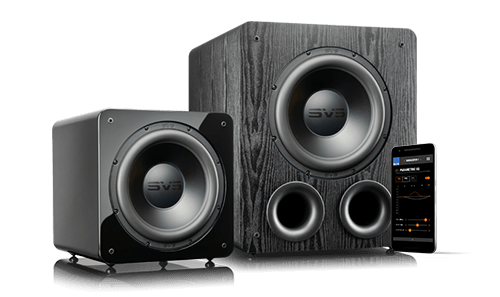
2000 Pro Series
Complete reimagining of the most popular SVS subwoofer models of all-time. The 2000 Pro Series feature 12-inch high-excursion driver and 550 watts RMS, 1,500+ watts peak power amplifier with advanced DSP tuning and smartphone app control.
View 2000 Pro Series
3000 Micro
Chest-pounding, musical bass with depth and slam from a shockingly compact 10-inch cabinet. SVS 3000 Micro seamlessly blends into any speaker system, energizing a space with effortless output from dual active 8-inch drivers and an 800 watt RMS, 2,500+ watt peak amplifier. Also features SVS subwoofer control app.
View 3000 Micro
3000 Series
Reference performance hits new lows. The 3000 Series feature 13-inch high-excursion driver with 800 watts RMS, 2,500+ watts peak power amplifier with fully discrete MOSFET output and SVS smartphone app for convenient DSP and control.
View 3000 Series
4000 Series
Reference quality bass, groundbreaking SVS value. The 4000 Series feature 13.5-inch high-excursion driver, 1,200 watts RMS, 4,000+ watts peak power amplifier with fully discrete MOSFET output and SVS smartphone app for convenient DSP and control.
View 4000 Series
16-Ultra Series
The ultimate reference standard for bass. The 16-Ultra Series feature a 16-inch high-excursion driver with 8-inch voice coil, 1,500 watts RMS, 5,000+ watts peak power amplifier with fully discrete MOSFET output and SVS smartphone app for convenient DSP and control.
View 16-Ultra SeriesAudio System Setup Articles
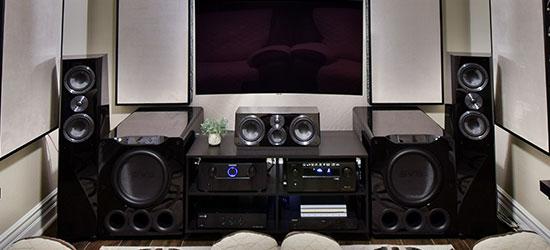
5 Ways to Improve the Sound of Your TV

Which Sounds Better, Vinyl or Digital Music?
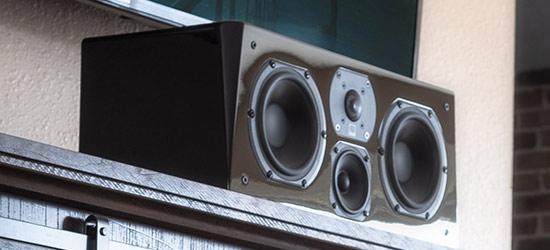
Why a Center Channel is the Most Important Speaker in Your Home Theater
Share Your Thoughts




